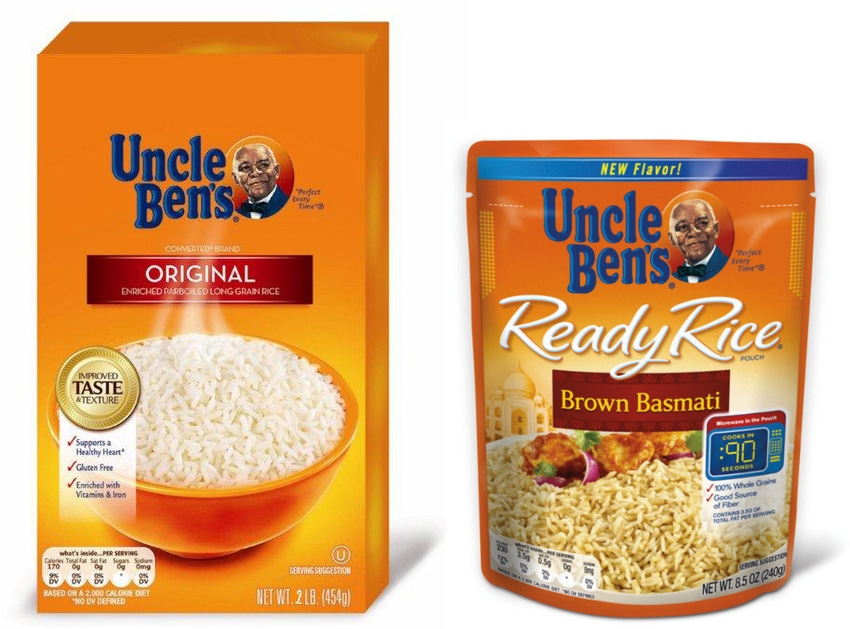With their health in mind, Mars Food’s packaging will alert consumers to ‘occasional’ foods

Mars Food, based in Brussels, Belgium, has announced its Health and Wellbeing Ambition initiative, which will include changes in labeling and packaging design for Mars brands like Uncle Ben’s and Seeds of Change.
The global initiative, developed to encourage consumers to eat, cook and share healthier foods, also will include consumer education and reformulation of many products. Announced in April 2016, the initiative will continue for five years.
Mars’ redesigned food packaging will state if the product is intended for “occasional” consumption, rather than everyday use, based on its nutritional profile. All packaging for products considered “occasional” (meaning they are higher in sugar, salt or fat than “everyday” foods) will be affected. Healthful recipes will appear on the new packaging, as well, to inspire more nutritious everyday cooking.
Product reformulation, including adding whole grains and vegetables to products, will play an important part in the Health and Wellbeing Ambition: Nearly half of Mars’ global product portfolio is slated for a reduction of sodium, fat or sugar. Mars is following the nutrition guidelines of the World Health Organization (WHO) and agencies like the United States Department of Agriculture (USDA) to plan each reformulation.
Craig Annis, vp of corporate affairs, Mars Food, explains the role of packaging in the initiative.
How will Mars’ food packaging change, as a result of the Health and Wellbeing Ambition?
Annis: We will add “occasional” labels to products that should be eaten on an occasional (approximately once a week) basis. We will also be updating and adding new recipes on-pack to increase the amount of vegetables and whole grains in our consumers’ diets.
Regarding the labels, we are working to develop an easy way for consumers to identify which of our products meet our Nutrition Criteria as “everyday” products, and those that do not as “occasional” (about 5% of our portfolio).
We are committed to transparent labeling and making sure that consumers can clearly identify salt, sugar and fat content on those labels and compare the nutrition information provided on-pack with the Mars Food Nutrition Criteria, available on Mars.com.
Will there be language on the new packaging explaining that the products were reformulated to be healthier?
Annis: We are working to develop an easy way for consumers to identify which products meet our Nutrition Criteria. In the next few months, we will share on our website a list of which products are “occasional,” which are “everyday” and which are slated for reformulation.
Will there be additional nutrition information on the packaging?
Annis: We currently include all nutritional information on our packaging as required by local market regulations. We also currently have front-of-pack and back-of-pack Guideline Daily Amounts (GDA) nutrition labeling on 99% of our products globally—excluding foodservice and spices.
When the “occasional” food designation is presented on Mars’ packaging, will there also be an explanation of what that means?
Annis: Yes. We are working now to consider the best design for the “occasional” label so it will be easily used by consumers. We will provide guidance on-pack and on our website regarding how often to consume our “occasional” meal offerings within a balanced diet. This guidance is based on how long it takes the body to restore balance after eating these meals, which are higher in salt, added sugar or fat to maintain the authentic nature of the recipe (such as Dolmio Lasagne Kits). For example, it is recommended that some of these products be consumed no more than once per week. The typical diet includes some days where calorie or nutrient intake is below the maximum recommended levels, enabling the body to restore balance within a week of consuming our “occasional” meals.
What types of recipes will be included on the new packaging?
Annis: Cooking and eating healthy meals at home with others is a key component of our Health and Wellbeing Ambition. Many of our products already contain on-pack recipes and, over time, we’ll ensure that all of our on-pack recipes meet the Mars Food Nutrition Criteria and encourage consumers to eat more vegetables, whole grains and lean proteins alongside our products.
What percentage of Mars’ food products will be affected by the initiative?
Annis: Approximately 95% of our global product portfolio will fall into the “everyday” category, following reformulation measures. The remaining 5% of the global product portfolio is expected to fall into the “occasional” category and will receive updated labels. We expect to reduce sodium, sugar or fat in approximately 45% of our portfolio.
When will shoppers see the products and the new packaging at retail?
Annis: We expect it will take about five years to develop the full range of alternatives that guarantee the integrity and great taste of the products consumers know and love. Products will be released to retailers as they are approved and go through new packaging and labeling cycles.
What products will U.S. shoppers see in the new packaging versus U.K. and Australian shoppers?
Annis: We offer different brands in different markets. In the U.S., some Uncle Ben’s and Seeds of Change products will be reformulated. It is unclear at this time which may bear the new “occasional” label. In the U.K., some products within Dolmio, Seeds of Change and Uncle Ben’s will be reformulated, and in Australia changes will be made to some MasterFoods, Kan Tong, Dolmio and Uncle Ben’s brands.
*************************************************************************************
Learn about the latest developments in food packaging at EastPack 2016, June 14-16, in New York City, on the show floor and at the Packaging for Food & Beverage conference.
About the Author(s)
You May Also Like




